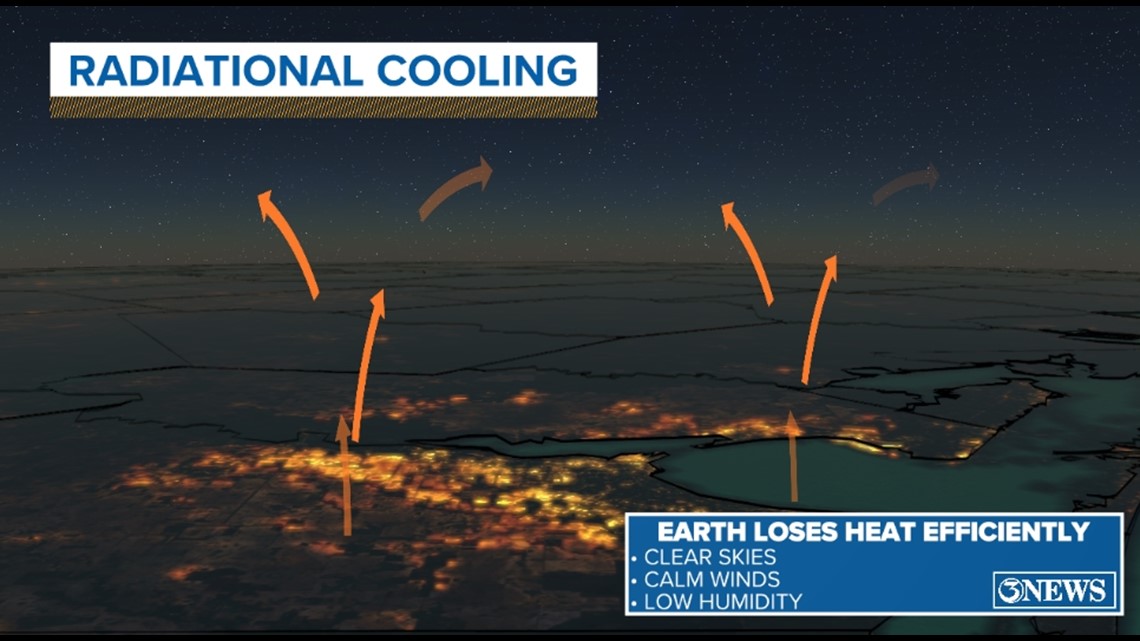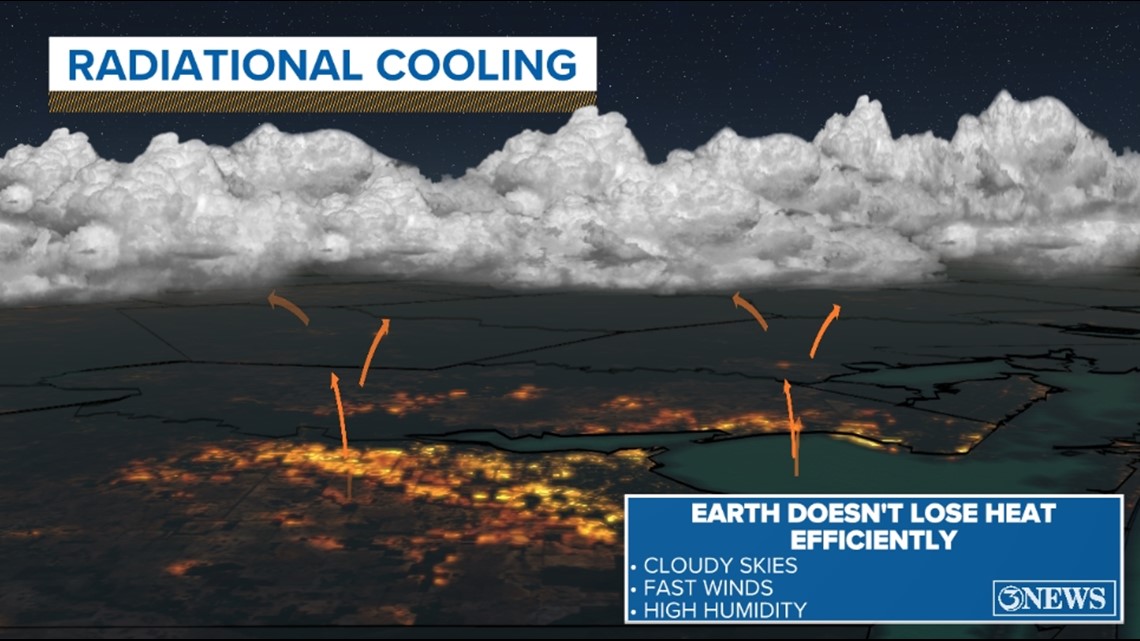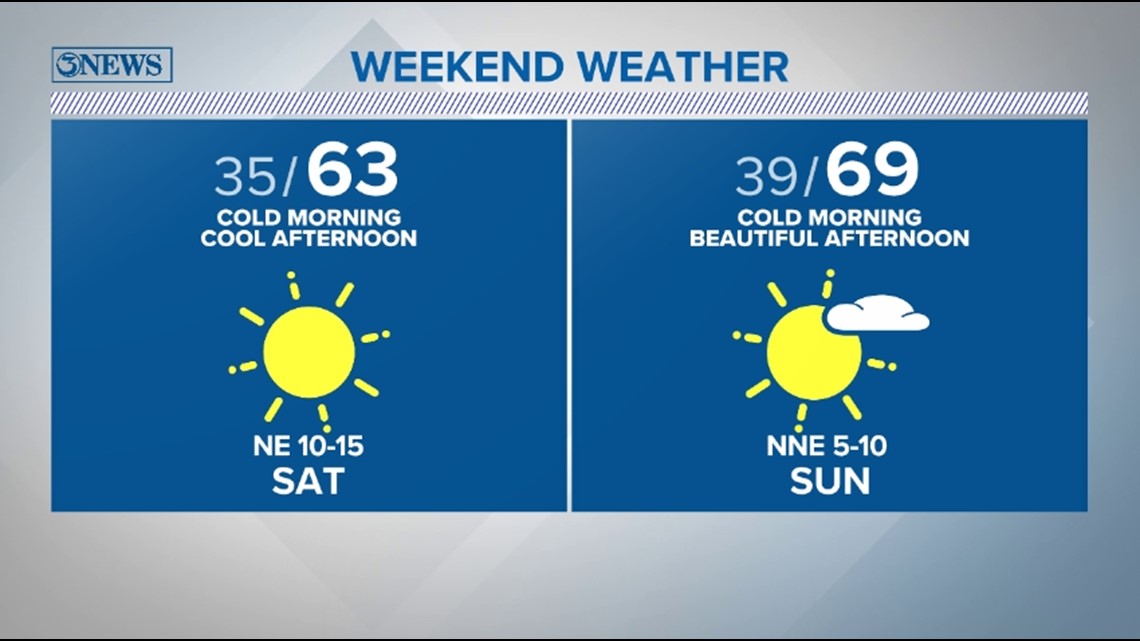Why does it get so cold some nights, but other nights stay relatively warm?
The answer: radiational cooling. It sounds complicated, but I promise it isn't!
Let's start with the concept of radiation - it's really just another way of saying 'energy'. The Sun's radiation is why we have weather here on Earth in the first place! It creates the global temperature differences that drive our weather patterns.
Radiational cooling is the meteorological phenomenon that explains why temperatures can plummet at night. It's based on the concept of radiative equilibrium, which basically means what's absorbed must be equal to what's emitted.
During the day, the atmosphere must be in radiative equilibrium. The amount of energy that's absorbed at the surface has to be equal to the amount of energy released at the top of the atmosphere. (A lot goes on between those two points, but we'll stick with what's happening here on the ground.)
However, there's no equilibrium requirement at night. Sounds kind of backwards, but think about it: at night, it's dark, right? There's no incoming solar radiation. And if there's no radiation being absorbed, that means it's only being emitted.
If there's no clouds in the way, all that radiation can easily emit back out into space from the Earth's surface. When we lose that energy, we lose heat, and when we lose heat, our temperature drops. That's how the Earth is able to efficiently cool at night.


But what if there are clouds in the way?
During the day, clouds help keep our temperatures cooler by reflecting solar radiation back up towards space. At night, clouds do the opposite - they keep us warmer. Again, sounds kind of weird, but it's true.
Similar to how air moves from high pressure to low pressure, heat moves from higher temperatures to lower temperatures. So if the lower temperatures aren't as cold anymore, then less heat needs to transfer to achieve equilibrium.
There's a few big, long equations (that I unwillingly had to learn to get my degree) that use the temperatures of the atmosphere, clouds, and Earth's surface to calculate how quickly the Earth's surface cools at night. These prove that when clouds - which aren't as cold as the atmosphere - are in the way of radiation emitted at night, less heat is lost by the surface, and we stay warmer.


The best conditions for efficient radiational cooling are clear skies, low winds, and low humidity. Calmer winds allow the radiation emitted by the Earth's surface to move away from the surface more quickly. Drier air can cool down more, and can do so more quickly, than humid air. So generally after a cold front, we have all these necessary ingredients.
Our next cold front here in the Coastal Bend is Friday morning, but Friday morning and afternoon will be cloudy, breezy, and rainy...literally the opposite of what we want for radiational cooling. However! That changes Friday afternoon into evening, as rain and clouds move out and winds calm down.
So by Friday night, all the ingredients will be in place for efficient radiational cooling, and our overnight temperatures will drop into the low 30s across the Coastal Bend by Saturday morning. Sunday morning will be in the mid- and upper 30s, since some of those pesky sky blankets will be keeping us just a bit warmer.


Now go impress someone with your new knowledge!
Thanks & Gig 'Em.

